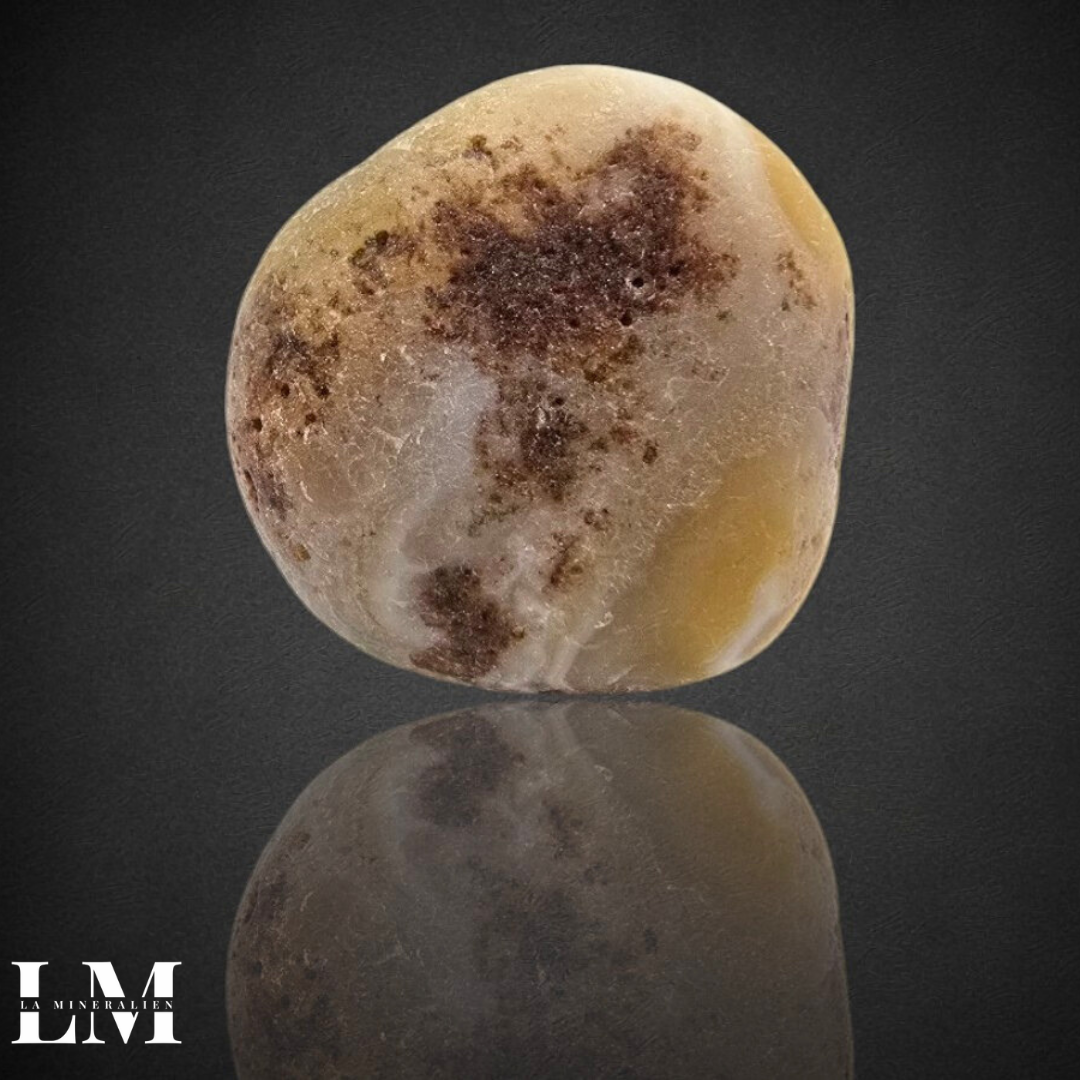 Image 1 of 2
Image 1 of 2

 Image 2 of 2
Image 2 of 2



Yuhua Agate (Nanjing, China) - 425_YHA7
About this piece:
The waterline formation on this agate-type yuhua has a gorgeous, watercolour paint texture. It's also a combination of the greys in the earlier pieces, and carnelian.
One one side, it also has a dendritic inclusion, likely of pegmatite.
———
Yuhua Agates are a famous specialty of Nanjing and Yizheng. According to legend, in the Liang Dynasty 1,400 years ago, a monk named Yunguang preached in the southern suburbs of Nanjing, which moved the heavens. Flowers fell like rain, and the rain of flowers turned into stones, so it was called Yuhua Stone. The lecture place was then renamed Yuhuatai.
Yuhua pebbles exist as rounded pebbles, instead of the usual mass growths, because they are from agate gravel which have been tumbled in the upper and middle reaches of the famous Yangtze River.
Their shape aside, Yuhua agates are set apart from regular agate because they often comprise of quartz, opal, siliceous rock, volcanic rock, fossils, and other aggregated material, a result of the unique geological conditions of the area. For this reason, Yuhua agates have ornamental and economic value in China.
In fact, it is so highly prized that there are countless stories and historical anecdotes, especially during the Tang and Song dynasties, appreciating this crystal stone. The best Yuhua agates often presents various landscapes, figures, birds, beasts, trees and other scenes. It was considered a treasure amongst stones, with titles like "Queen of Stones" and has been praised as "a national treasure bestowed by heaven, unique in China."
Finally, Yuhua stones are often categorised by their minerology. There's the chalcdeony/agate type, the opal type, the jasper type, the flint type, the quartzite type, the vein-quartz type, the tectonic type, the conglomerate type, the fossilised type, the model tree type, and the jade type. We have done our best to figure out which category each of these belong to, where it is possible to do so.
About this piece:
The waterline formation on this agate-type yuhua has a gorgeous, watercolour paint texture. It's also a combination of the greys in the earlier pieces, and carnelian.
One one side, it also has a dendritic inclusion, likely of pegmatite.
———
Yuhua Agates are a famous specialty of Nanjing and Yizheng. According to legend, in the Liang Dynasty 1,400 years ago, a monk named Yunguang preached in the southern suburbs of Nanjing, which moved the heavens. Flowers fell like rain, and the rain of flowers turned into stones, so it was called Yuhua Stone. The lecture place was then renamed Yuhuatai.
Yuhua pebbles exist as rounded pebbles, instead of the usual mass growths, because they are from agate gravel which have been tumbled in the upper and middle reaches of the famous Yangtze River.
Their shape aside, Yuhua agates are set apart from regular agate because they often comprise of quartz, opal, siliceous rock, volcanic rock, fossils, and other aggregated material, a result of the unique geological conditions of the area. For this reason, Yuhua agates have ornamental and economic value in China.
In fact, it is so highly prized that there are countless stories and historical anecdotes, especially during the Tang and Song dynasties, appreciating this crystal stone. The best Yuhua agates often presents various landscapes, figures, birds, beasts, trees and other scenes. It was considered a treasure amongst stones, with titles like "Queen of Stones" and has been praised as "a national treasure bestowed by heaven, unique in China."
Finally, Yuhua stones are often categorised by their minerology. There's the chalcdeony/agate type, the opal type, the jasper type, the flint type, the quartzite type, the vein-quartz type, the tectonic type, the conglomerate type, the fossilised type, the model tree type, and the jade type. We have done our best to figure out which category each of these belong to, where it is possible to do so.













